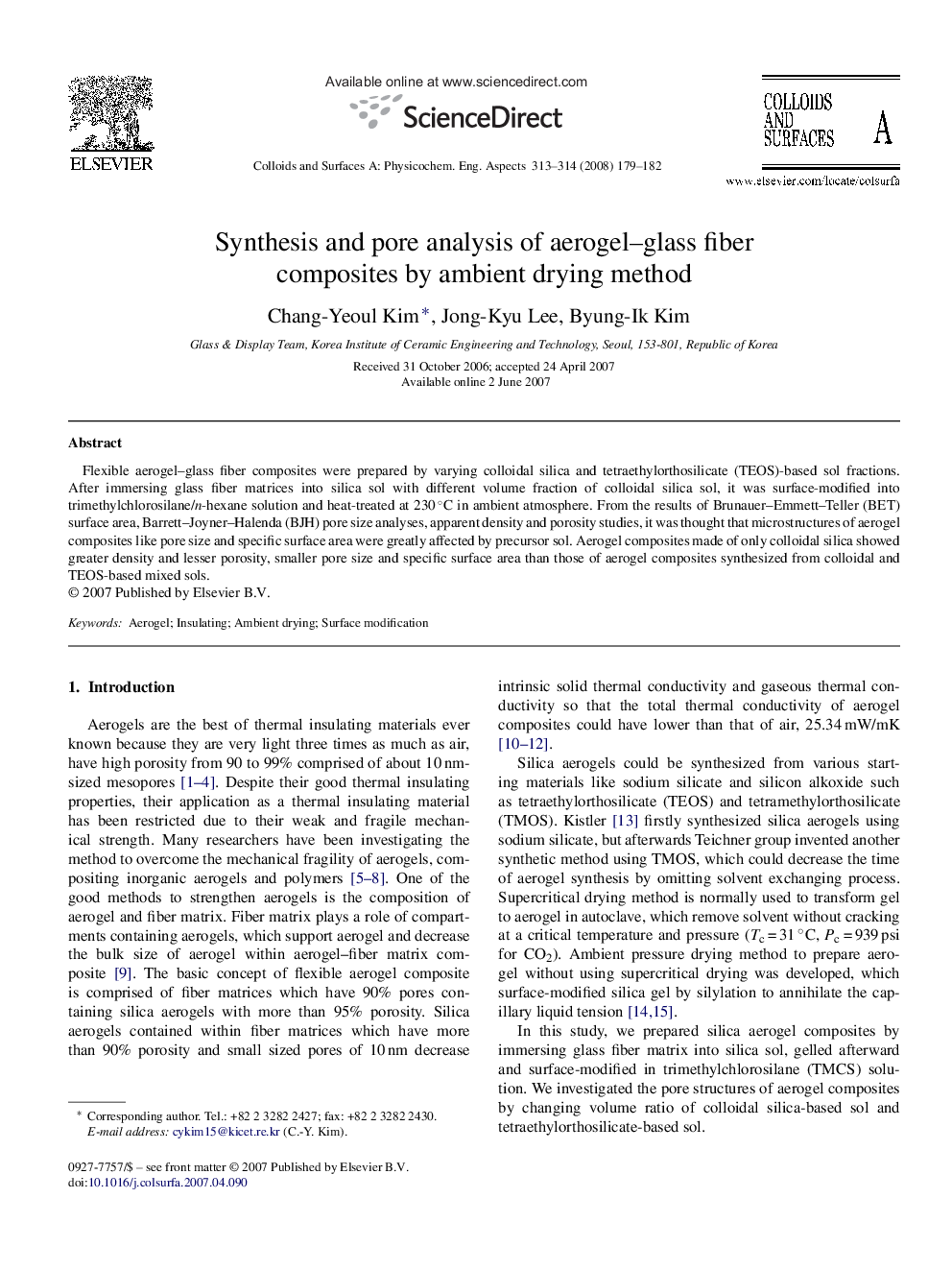| Article ID | Journal | Published Year | Pages | File Type |
|---|---|---|---|---|
| 596957 | Colloids and Surfaces A: Physicochemical and Engineering Aspects | 2008 | 4 Pages |
Flexible aerogel–glass fiber composites were prepared by varying colloidal silica and tetraethylorthosilicate (TEOS)-based sol fractions. After immersing glass fiber matrices into silica sol with different volume fraction of colloidal silica sol, it was surface-modified into trimethylchlorosilane/n-hexane solution and heat-treated at 230 °C in ambient atmosphere. From the results of Brunauer–Emmett–Teller (BET) surface area, Barrett–Joyner–Halenda (BJH) pore size analyses, apparent density and porosity studies, it was thought that microstructures of aerogel composites like pore size and specific surface area were greatly affected by precursor sol. Aerogel composites made of only colloidal silica showed greater density and lesser porosity, smaller pore size and specific surface area than those of aerogel composites synthesized from colloidal and TEOS-based mixed sols.
